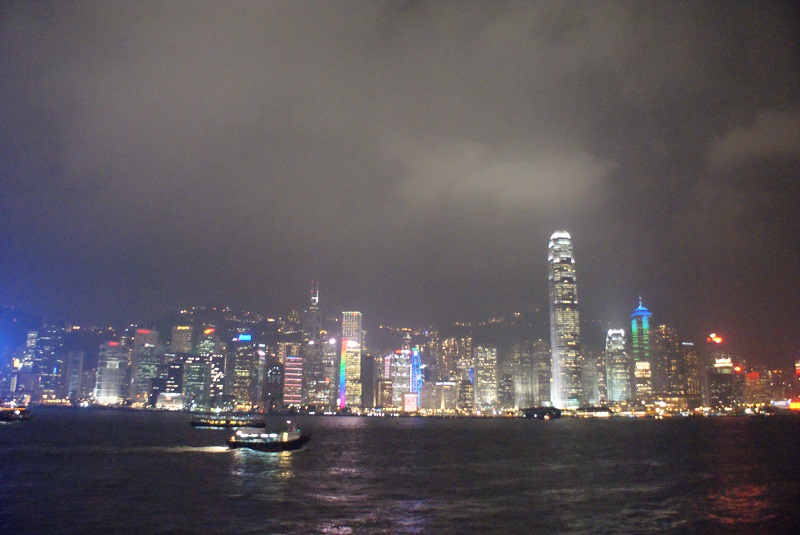The 20-year project that dazzled at the ICE Awards

|
| This huge environmental infrastructure project, which won the Edmund Hambly Medal at the ICE Awards in 2018, was decades in the making, but will deliver benefits to the local community for years to come. Pictured: Hong Kong harbour. |
Contents |
[edit] Introduction
In early March 2018, with support from the Development Bureau of the Government of the Hong Kong Special Administrative Region, the Drainage Services Department participated in the 2018 Edmund Hambly Medal organised by ICE. It submitted its largest-ever environmental infrastructure project, the Hong Kong Harbour Area Treatment Scheme (HATS). This international award is a prestigious recognition of a project for its promotion and contribution of sustainable development to civil engineering.
Having known that HATS was going to run for the award, members of the HATS project team were overwhelmed with excitement. They were both thrilled and filled with apprehension about competing alongside other world-class mega projects.
[edit] A mega project that always had the future in mind
HATS is the largest environmental infrastructure project ever undertaken in Hong Kong. The whole project was delivered in two stages spanning more than 20 years. A variety of sustainability elements had been incorporated in the project, all of which were essential features satisfying the criteria of the Edmund Hambly Medal award.
While the submission requirements looked simple – a citation of about 500 words depicting the highlights of sustainable development and efficacy of the project – precisely covering the complexity of this mega project in a short article was a challenge.
[edit] 'Our first international ICE competition'
It was the first time HKSAR Drainage Services Department had participated in an international award competition under the ICE. During preparation, the Department repeatedly examined the significance of each design or construction element relevant to the award.
In addition to satisfying the technical requirements of sewage treatment, the project team aimed at delivering the HATS project with state-of-the-art technologies and innovation. These included using inverted siphons in sewage conveyance to reduce the energy consumption of pumping sewage, and using a diesel-electricity engine and on-shore electricity supply to reduce carbon emissions when sludge transportation vessels were berthed. Sludge was also incinerated to achieve conversion of waste to energy.
Including other elements of sustainable development, for example, land-saving and renewable energy, the HATS project clearly possessed the essential features to be eligible for the award.
[edit] Global recognition
Gaining recognition from the ICE, an internationally-renowned professional institution, the project finally won the Edmund Hambly Medal, and the project team was greatly honoured to join the awards ceremony in October 2018 to receive the award in the ICE’s elegant and beautifully decorated Grand Hall.
The team was pleased to see a panoramic view of the Stonecutters Island Sewage Treatment Works (the foremost iconic construction of HATS) was used as the backdrop for the ceremony – further affirming the recognition of the project.
[edit] Major, long-lasting achievements
Having overcome numerous difficulties and challenges, the HATS project was eventually completed after decades of hard work. The project not only significantly reduces the pollution level in the Victoria Harbour, but the beaches at the western part of Hong Kong could also be re-opened for public use.
In 2017, the cross-harbour swimming race, which had been suspended for 40 years due to water pollution, resumed in the central waters of Victoria Harbour, enabling the people of Hong Kong to relive their memories.
The above factors have motivated the team to continue with its quest for engineering excellence and to strive for sustainable development for the benefits of future generations.
Today, while people are enjoying the fragrant ambience of Victoria Harbour, tribute should be paid to former fellow engineers who worked on HATS. Their respectful foresight and perseverance in promoting and delivering this landmark project has substantially improved the water quality of the much-loved harbour for the enjoyment of the public.
[edit] About this article
This article was written by the ice.org.uk Drainage Services Department, Government of the Hong Kong Special Administrative Region (HKSAR). It appeared on the website of the Institution of Civil Engineers (ICE) and can be accessed here.
[edit] Related articles on Designing Buildings Wiki
- Biophilic design.
- BREEAM Responsible sourcing of materials.
- Climate change science.
- Ecological impact assessment.
- Emission rates.
- Energy targets.
- Environmental impact assessment.
- Environmental legislation.
- Intergovernmental Panel on Climate Change.
- Mean lean green.
- Sustainable development.
- Sustainable materials.
- Sustainable procurement.
- Sustainable urban drainage systems.
- The Carbon Plan: Delivering our low carbon future.
- UK Climate Change Risk Assessment.
- U-value.
- Zero carbon homes.
- Zero carbon non-domestic buildings.
Featured articles and news
The UK's Modern Industrial Strategy: A 10 year plan
Previous consultation criticism, current key elements and general support with some persisting reservations.
Building Safety Regulator reforms
New roles, new staff and a new fast track service pave the way for a single construction regulator.
Architectural Technologist CPDs and Communications
CIAT CPD… and how you can do it!
Cooling centres and cool spaces
Managing extreme heat in cities by directing the public to places for heat stress relief and water sources.
Winter gardens: A brief history and warm variations
Extending the season with glass in different forms and terms.
Restoring Great Yarmouth's Winter Gardens
Transforming one of the least sustainable constructions imaginable.
Construction Skills Mission Board launch sector drive
Newly formed government and industry collaboration set strategy for recruiting an additional 100,000 construction workers a year.
New Architects Code comes into effect in September 2025
ARB Architects Code of Conduct and Practice available with ongoing consultation regarding guidance.
Welsh Skills Body (Medr) launches ambitious plan
The new skills body brings together funding and regulation of tertiary education and research for the devolved nation.
Paul Gandy FCIOB announced as next CIOB President
Former Tilbury Douglas CEO takes helm.
UK Infrastructure: A 10 Year Strategy. In brief with reactions
With the National Infrastructure and Service Transformation Authority (NISTA).
Ebenezer Howard: inventor of the garden city. Book review.
The Grenfell Tower fire, eight years on
A time to pause and reflect as Dubai tower block fire reported just before anniversary.
Airtightness Topic Guide BSRIA TG 27/2025
Explaining the basics of airtightness, what it is, why it's important, when it's required and how it's carried out.
Construction contract awards hit lowest point of 2025
Plummeting for second consecutive month, intensifying concerns for housing and infrastructure goals.
Understanding Mental Health in the Built Environment 2025
Examining the state of mental health in construction, shedding light on levels of stress, anxiety and depression.






















